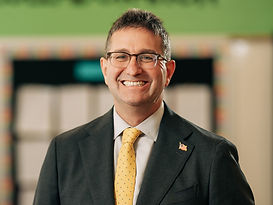GUEST COLUMN.
ART AND SCIENCE OF CREATING CONTRACTS
By Alexandria Costa, Director of Strategic Initiatives for Pope Solutions, Wendy Chen, Associate Professor of Public Administration, Texas Tech University, and David P. Gragan, Chief Strategy Officer for Pope Solutions

When Washington acts, you’d expect the states to plan to react. But do they? That was the question we set out to explore in July 2025, armed with a clear hypothesis, a shared Google calendar, and a contact list of some of the most seasoned procurement leaders in the country.
Our theory was straightforward: If the federal government consolidates agencies, eliminates programs, or pushes responsibilities down to the states, state contracting offices will quickly react in one or more of several ways. When federal funds arrive but are not always in sync with the state’s current needs, leanly staffed state procurement offices will absorb more work without additional personnel. All this will lead to contract times that are extended, increased workloads and mounting strains on both personnel and the system.
But if that was the storm we were predicting, our interviews suggested a different weather event: the clouds were there, but the downpour had not begun.
The Two-Week Listening Tour
Over two midsummer weeks, we spoke with a cross-section of leaders who had served in both federal and state arenas — people who had weathered policy swings and budget cycles from multiple vantage points. Our interviewees included procurement chiefs, agency heads, and even leaders adjacent to the field, like a state Medicaid director and a nonprofit CEO who bridges academia and government.
We were not simply looking to confirm or debunk our theory. We wanted to spot early signals, patterns that other states could learn from before the next big change from Washington rolled downhill.
The Reality Check
From the outset, we assumed that as agencies were dismantled or defunded, their functions and financial obligations would inevitably flow downward to the state level. That uncertainty did not push agencies into high gear, rather it often kept them steady, sticking to existing processes until resources were actually in hand.
Most leaders we spoke with said they keep their focus squarely on service delivery, regardless of projections. Whether the money surged, trickled, or never came at all, the mission remained the same. The closer an agency is to the citizens it serves, the more procurement becomes an operational function not just an administrative one.
A Different Story Is Emerging
None of this means procurement leaders are ignoring risk. Far from it. With the benefit of years serving in public procurement leadership roles, it is safe to say that understanding and managing risk is part of the procurement executive’s responsibility. This is truly the art versus the more process-driven “science” of creating contracts. The process of considering vendor responsibility, a key step in the contracting process, is all about ensuring we do not put public monies at risk. And we understand that in the context of government, where the chief executive is an elected public servant, failure to properly manage our fiscal responsibilities is not an option.
During our conversations with public leaders, many acknowledged that if Washington’s changes ever do bring more work without more funding, the strain would be significant. But they were not changing priorities in anticipation, and they were not panicking.
Instead, what we saw was a steadfast perseverance. Leaders keep moving forward, aware they cannot reliably predict, much less plan or budget for, the downstream effects of decisions made in our nation’s capital until dollars actually land in state or local accounts.
Our original hypothesis assumed a direct, calculable cause-and-effect between federal restructuring and state procurement activity. The product of our informal research was expected to be an advisory notice to public service practitioners across the board that we could turn uncertainty into opportunity by simply having awareness and contingency plans supporting multiple evolving yet foreseeable circumstances. In the work of public leaders in all governments, reacting to the vagaries of outside influences is, again, part of our job.
What we found was more nuanced: the real story may be less about the changes themselves, and more about how public leaders operate in an environment where the ground is always shifting. What we discovered – in retrospect not surprisingly – was that the agility needed to be an effective public leader can always be viewed as an opportunity rather than an impediment, a chance to be public entrepreneurs rather than bureaucrats. This shift enables government leaders to drive public innovation, identifying knowledge gaps, experimenting with bold ideas, forging cross-sector collaborations, and delivering value in fast-changing environments.
That mindset, pragmatic, unshaken, and citizen-focused, may be the most valuable best practice states can share. Not a new policy framework, but a way of working that makes them ready for whatever comes next.
The contents of this Guest Column are those of the author, and not necessarily Barrett and Greene, Inc.
#StateandLocalProcurement #FederalRestructuringAndStateProcurement #StateGovernmentProcurement Management #StateProcurementMission #StateProcurementPerformance #StateProcurementPerserverance #ProcurementAndCrossSectorCollaboration #MitigatingStateProcurementRisk #PublicSectorProcurement #StateProcurementAndServiceDelivery #DavidGragan #WendyChen #FederalRealignmentAndStateProcurementImpact #FederalRestructuringAndStateProcurement #FederalRestructuringAndStateContracting #StateProcurementPerformance #StateContract Management #FederalPolicyImpactAndStateContracting #IntergovernmentalRelationsAndProcurement #IntergovernmentalRelationsAndStateContracting #StateProcurementInnovation #StateProcurementEntreprenneurship #StateandLocalGovernmentManagement #StateandLocalGovernmentPerformance #BandGGuestColumn #BarrettandGreeneInc



































































































